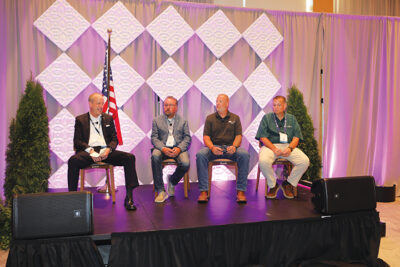Unemployment For Construction Workers Declines; Otherwise Mixed Employment Report
(Editor’s note: For more information on the following, visit www.eyeonhousing.org.)
Despite high interest rates, job growth accelerated in May (the most recent data available at press time), but the unemployment rate increased to 4.0 percent. Overall, the labor market remains strong, but there are signs of slowing, which signals monetary policy easing in the months ahead.
Additionally, wage growth accelerated for the first time in four months. In May, wages grew at a 4.1 percent year-over-year (YOY) growth rate, down 0.5 percentage points from a year ago. Wage growth is well below a 5.9 percent YOY growth rate in March 2022. However, wage growth has been trending down over the past two years, while productivity growth has rebounded. The gap between wage growth and productivity growth has narrowed.
Total nonfarm payroll employment increased by 272,000 in May, following a downwardly revised increase of 165,000 jobs in April, as reported in the Employment Situation Summary. The estimates for the previous two months were revised down. The monthly change in total nonfarm payroll employment for March was revised down by 5,000, from +315,000 to +310,000, while the change for April was revised down by 10,000 from +175,000 to +165,000. Combined, the revisions were 15,000 lower than the original estimates. Despite restrictive monetary policy, nearly 7.7 million jobs have been created since March 2022, when the Fed enacted the first interest rate hike of this cycle. In the first five months of 2024, 1,239,000 jobs were created, and monthly employment growth averaged 248,000 per month, compared with the 251,000 monthly average gain for 2023.
In May, the unemployment rate rose to 4.0 percent, from 3.9 percent in April. The number of unemployed persons rose by 157,000, while the number of employed persons decreased by 408,000.
Meanwhile, the labor force participation rate, the proportion of the population either looking for a job or already holding a job, decreased two percentage points to 62.5 percent for May. Moreover, the labor force participation rate for people aged between 25 and 54 ticked up to 83.6 percent. While the overall labor force participation rate is still below its pre-pandemic levels at the beginning of 2020, the rate for people aged between 25 and 54 exceeds the pre-pandemic level of 83.1 percent.
For industry sectors, health care (+68,000), government (+43,000), leisure and hospitality (+42,000), and professional, scientific, and technical services (+32,000), have notable job gains in May.
Employment in the overall construction sector increased by 21,000 in May, after no change in April. While residential construction gained 3,500 jobs, nonresidential construction employment added 17,100 jobs for the month.
Residential construction employment now stands at 3.4 million in May, broken down as 950,000 builders and 2.4 million residential specialty trade contractors. The 6-month moving average of job gains for residential construction was 6,167 a month. Over the last 12 months, home builders and remodelers added 71,900 jobs on a net basis. Since the low point following the Great Recession, residential construction has gained 1,376,000 positions.
In May, the unemployment rate for construction workers declined to 4.2 percent on a seasonally adjusted basis. It marks the lowest unemployment rate for construction workers over the past 11 months. The unemployment rate for construction workers remained at a relatively lower level, after reaching 15.3 percent in April 2020, due to the housing demand impact of the COVID-19 pandemic.
Mortgage Rates Increase Slightly, Then Ease Back In June
According to Freddie Mac, the average 30-year fixed-rate mortgage increased by 7 basis points (bps) in May 2024, reaching 7.06 percent, up from 6.99 percent the previous month. This represents a 64 bps increase from the previous year, when it stood at 6.34 percent. The 15-year fixed-rate mortgage also saw an increase, rising 8 bps from April 2024, and 54 bps compared to May 2023.
As of the week ending June 7, 2024, the latest data shows a slight easing in mortgage rates, with the 30-year mortgage at 6.99 percent and the 15-year mortgage at 6.35 percent. On the other hand, the average 10-year Treasury yield decreased slightly by 6 bps after a sharp increase between March and April.
Per the National Association of Home Builders (NAHB) forecast, they expect 30-year mortgage rates to stay elevated at around 6.66 percent at the end of 2024 and eventually to decline to under 6 percent by the end of 2025. The NAHB outlook is for the federal funds rate to be cut at the December Federal Reserve meeting and six more rate cuts in 2025.









